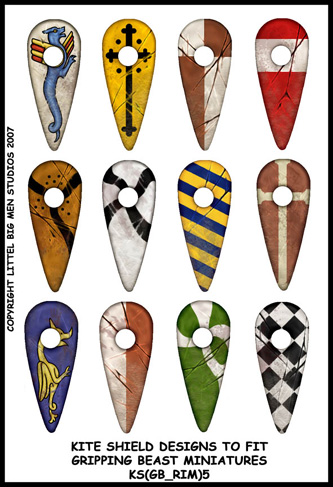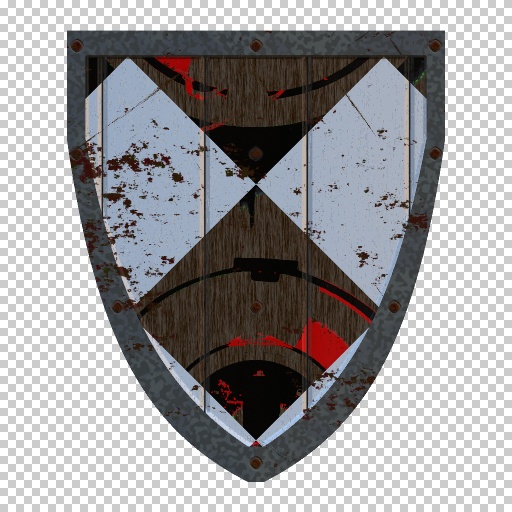

Kite shields also appear on the Bab al-Nasr in Cairo, which was constructed around 1087.

For example, an eleventh century silver engraving of Saint George recovered from Bochorma, Georgia, depicts a kite shield, as do other isolated pieces of Georgian art dating to the twelfth and thirteenth centuries. Kite shields were depicted primarily on eleventh century illustrations, largely in Western Europe and the Byzantine Empire, but also in the Caucasus, the Fatimid Caliphate, and among the Kievan Rus'. Meanwhile, 11th century Frankish knights typically used kite shields, making it more likely that Normans took it from them, just like they did with the nasal helmet. However, no documentation or remains of kite shields from the Viking era have been discovered, and they were not ideally suited to the Vikings' highly mobile light infantry. A theory is that the kite shield was inherited by the Normans from their Viking predecessors. It is unclear from which of these three regions the design originated. Aside from Normandy, they also appeared early on in parts of Spain and the Holy Roman Empire. In the Bayeux Tapestry, most of the English are depicted on foot with kite shields, while a minority still use round shields. Kite shields gained popularity, spreading throughout Western Europe during the 1000s. This was a vast improvement over more common circular shields, such as bucklers, which afforded poor protection to the horseman's left flank, especially when charging with a lance. A narrow bottom protected the rider's left leg, and the pronounced upper curve, the rider's shoulder and torso. The shield was developed for mounted cavalry, and its dimensions correlate to the approximate space between a horse's neck and its rider's thigh. Since the most prominent examples of this shield have appeared on the Bayeux Tapestry, the kite shield has become closely associated with Norman warfare. The term "kite shield" is a reference to the shield's unique shape, and is derived from its supposed similarity to a flying kite, although "leaf-shaped shield" and "almond shield" have also been used in recent literature. A kite shield is a large, almond-shaped shield rounded at the top and curving down to a point or rounded point at the bottom.


 0 kommentar(er)
0 kommentar(er)
